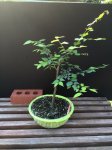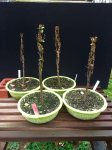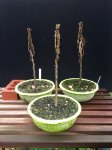cmeg1
Imperial Masterpiece
Will be applying wire real soon as leaves are starting to fall off the trees.I am obviously getting impatient to post.
I do have my game plan worked out for next season.I am getting away from colanders and going to build shallow 12" grow boxes from wood.
I am also going to Definately make the switch to akadama and get away from the potting soil.I used it this season in a pot and am confident it will work for my bonsai.
I am going to test the approach of fertilizing zero nitrogen ferts all of the season the zelkova except a couple chemical feeds in spring to wake them up.Learn by doing.
I seen it recommended a few times for Zelkova.They are going to get organic bloom with every watering.
Going to buy wire this Tuesday and maybe strip the rest of the leaves and get to it.
I do have my game plan worked out for next season.I am getting away from colanders and going to build shallow 12" grow boxes from wood.
I am also going to Definately make the switch to akadama and get away from the potting soil.I used it this season in a pot and am confident it will work for my bonsai.
I am going to test the approach of fertilizing zero nitrogen ferts all of the season the zelkova except a couple chemical feeds in spring to wake them up.Learn by doing.
I seen it recommended a few times for Zelkova.They are going to get organic bloom with every watering.
Going to buy wire this Tuesday and maybe strip the rest of the leaves and get to it.






